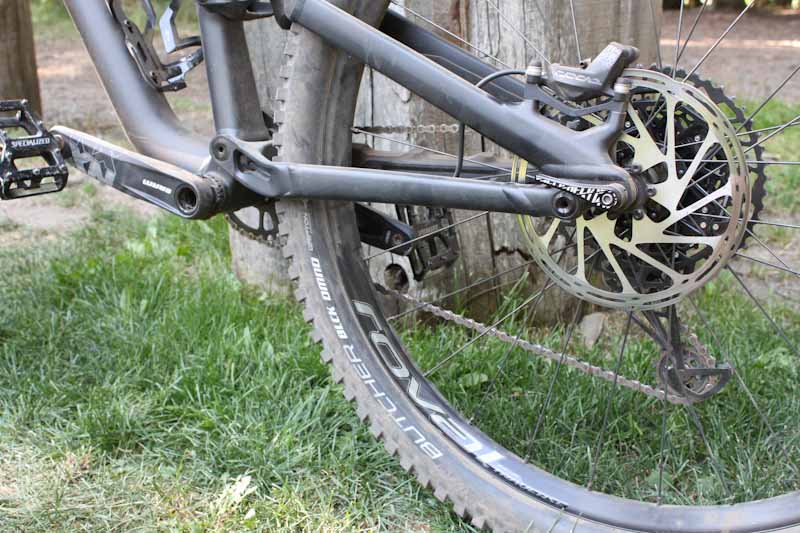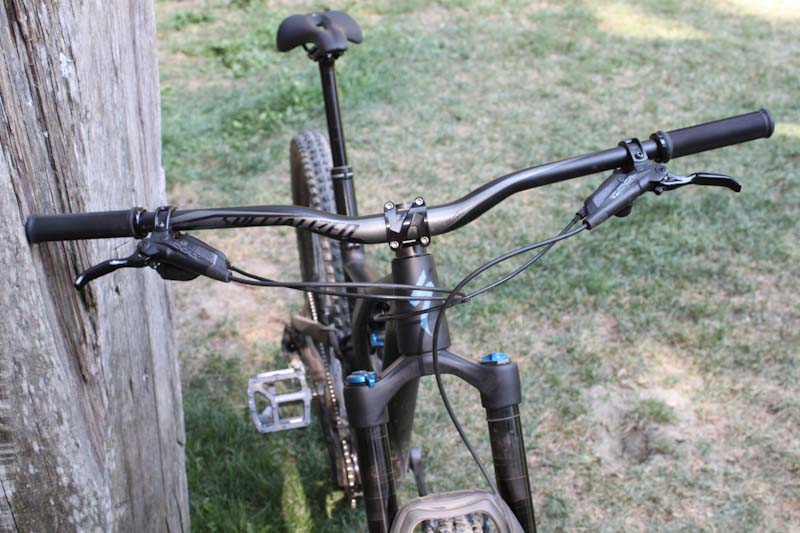One bike I was pretty excited to get on at Crankworx Whistler this year was the new Specialized Stumpjumper Evo. Zach rode the regular version at the launch, but living in B.C., I’ve always kept an eye on those special edition trail bikes that some brands modify with slackened head angles and extra suspension travel. After one ride on the Stumpy Evo 29er, I can confidently say I’ve never ridden a trail bike that gobbles up rough descents like this one!
These niche-y bikes encourage you to go nuts on steep, rowdy descents but will still get you there under your own power, making them an ideal choice for non-competitive riders who subscribe to the ‘gotta get up to get down’ approach. An Evo will not climb as capably as a regular Stumpjumper, but unless you’re racing the compromises are minimal and the rewards are great once you point it downhill.
Before we get to the fun part, let’s start with the climbing. Specialized’s well-established FSR rear linkage is a great all arounder, offering pretty good pedalling support but also remaining fairly active at all times. The lively ride helps smooth out the trail as you climb, and provides solid traction over rocky or rooty uphill sections.
One thing I’ve found is that seemingly every FSR or four-bar linkage bike relies on a shock with a pedalling mode. With a shock wide open these rear ends typically bob quite freely and are not the most efficient peddlers. But with a little help from the shock they perform quite well. I climbed the Stumpy Evo with the Fox Float DPX2 rear shock in its climb mode, and it offered the balance of good support and great traction I’ve come to expect from FSR-equipped bikes.

The frame’s stretched out geometry is where you’ll notice the Evo’s limits on a climb. I rode a steep, consistent ascent and the bike’s ultra-slack 63.5° head angle was hard to ignore. From the saddle, the front wheel on the Evo looks like its way out in front of you, and when the climb gets steep it feels like it too.
When my energy ran low, I found the front wheel flopping around left-to-right. It’s not easy to get your weight up over that wheel, so on lung-busting steeps this bike’s front end begins to feel long and requires some extra effort to keep you tracking straight.

The Stumpy Evo’s are made from aluminum and come in two sizes Specialized calls S2 and S3; I rode the smaller S2 model. The frame’s 445mm reach and steep 76° seat tube puts you in an aggressive position, but despite the effort to maintain climbing efficiencies the steering angle still makes the bike feel long up front. You can lean in over the head tube, but that chopper-like front wheel is still way ahead of you. Both wheels remained planted as I climbed, but the Evo’s front end felt a bit light compared to a more typical trail bike.
Now when you point it down, the Evo turns it up! After barely a minute of descending a very technical trail (which was used and abused as part of an EWS race the day before) I couldn’t help but think the Stumpy Evo feels like a trail bike with the front end of a downhill bike…which it basically is.
My trail of choice had some big steep rock slabs, and I was literally laughing to myself as I easily sailed down them. This is where that chopper-ish front wheel reaches out like a helping hand, and in the attack position your body feels well centered over the bike.
On this ride I also realized why all the racers have switched to 29” wheels. This trail was beaten to a pulp, but with the big 29’s (and 2.6” wide Butcher tires) the Evo handily cruised over all the huge holes the EWS racers dug out. The 150mm Fox Float Rhythm 36 fork and 140mm of rear travel was ample with the larger wheels, taking this roughed-up trail in stride.
I usually ride 27.5” bikes so between the slack steering and 29” wheels the Stumpjumper Evo’s length was very noticeable in tight corners. I’d expect anyone moving onto bigger wheels will feel the same, but I definitely had to initiate turns sooner than usual, and get used to less nimble handling than a smaller wheel can provide. The tradeoff of course is stability at high speeds, which was fantastic on the Evo.
Given my short time with the bike I focused on the ride qualities provided by the Evo’s unique frame geometry, but as for components here’s a few quick notes: Specialized was wise to give this gravity-focused bike Avid Code brakes on 200mm rotors front and rear, and include a chain guide. They’ve kept things up to date with 30mm rims and wide tires, an 800mm aluminum handlebar and 45mm stem, and a 150mm X-Fusion Manic dropper post. The SRAM NX Eagle 12-speed drivetrain was even fitted with a 30t front ring to help out on tough climbs.
If downhill fun is the name of your game, I would strongly recommend checking out a Stumpjumper Evo versus a more typical trail bike. There is some sacrifice on the climbing side, but if you’re not going for Strava records or podium finishes the Evo isn’t going to slow you down by much. You might have to muscle it up some steeper uphill sections, but as soon as you point it downwards you’ll be laughing all the way.
The Stumpjumper Evo Comp Alloy 29 retails for $3,600 USD.





